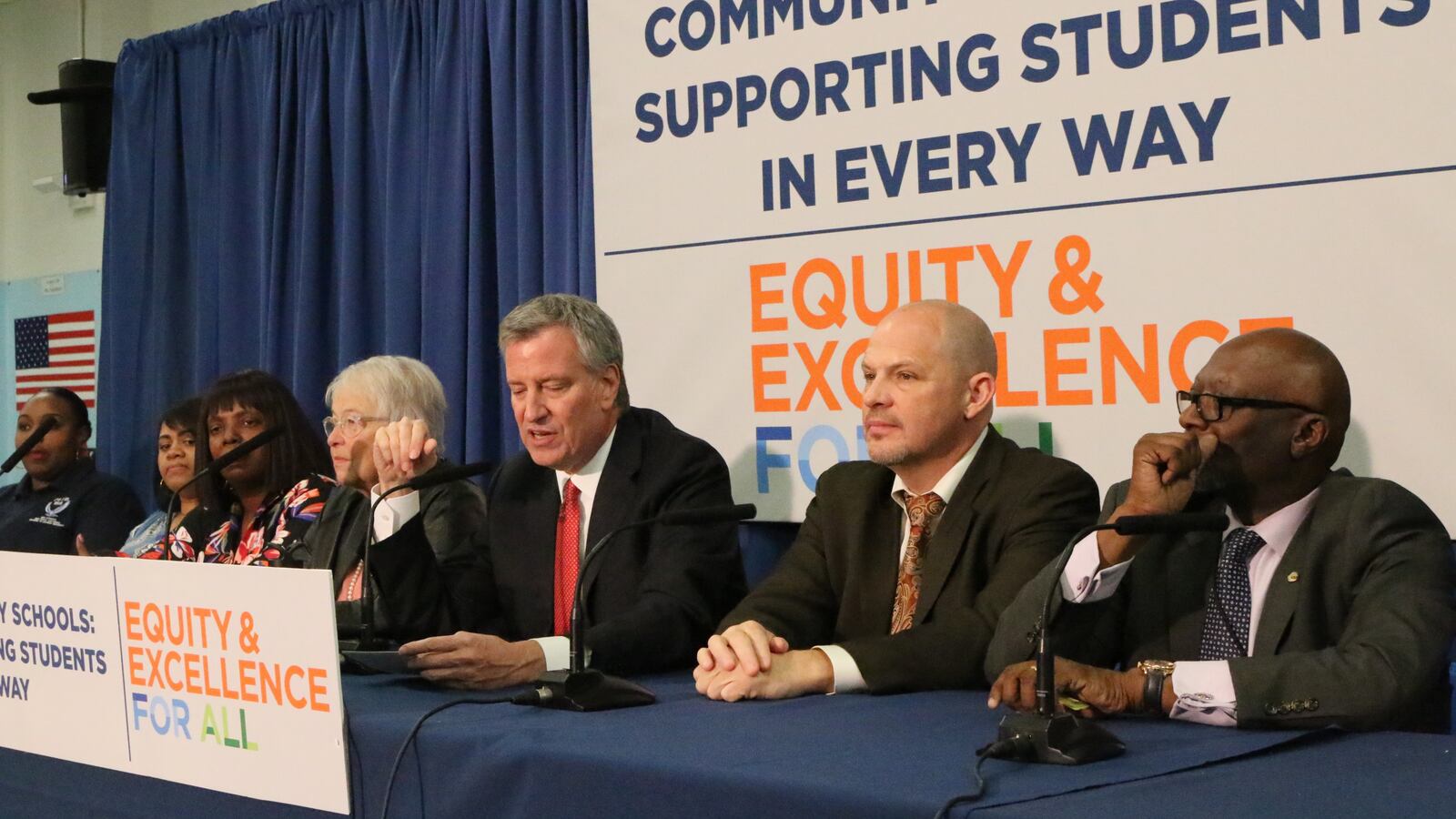Mayor Bill de Blasio has staked a large portion of his education agenda on turning around the city’s low-performing schools by flooding them with extra social services — a strategy supported by a new study released Monday.
The report, from the Learning Policy Institute, looked at 125 studies on the impact of community schools and found that in many cases, the programs are correlated with improved student outcomes.
“Usually you initially see improvements in attendance,” said Linda Darling-Hammond, the think tank’s president and CEO. “You begin to see improvements in behavior […] and graduation rates — and over time you also see improvements in test scores and other types of academic indicators.”
The study comes less than a month after the mayor announced a significant expansion of New York’s community schools program. Starting next fall, the program will grow to include 215 schools citywide — the largest such program in the country, officials said.
Though the latest report from LPI paints a generally rosy picture of the research on community schools, other studies have suggested more tepid results. Whether New York City’s version of the program is paying off has been contested, and there has not yet been an independent evaluation of the city’s community schools.
The LPI report argues that nationally there has been enough research on the approach to justify community schools as a useful strategy for high-poverty schools under the Every Student Succeeds Act, a federal law that requires interventions to be “evidence based.”
In New York City, the approach varies by school, but always includes an hour of extra learning time, efforts to engage families and boost attendance, and an additional staff member to help coordinate partnerships with nonprofit organizations that offer services such as mental health counseling or dental checkups.
While some argue those services are badly needed in high-poverty schools, it’s less obvious whether they lead directly to academic gains. In the context of de Blasio’s Renewal program — which uses the model to help stoke academic improvements at low-performing schools — the evidence based on the city’s own metrics has been mixed.
Darling-Hammond acknowledged that there might be variation in school-by-school outcomes depending on how well the program is implemented and emphasized “most intensive changes require three to five years.” (De Blasio’s Renewal program is less than three years old.)
She also pointed to other factors such as teacher turnover or the quality of a school’s leadership that can make it “hard to get traction as quickly.”
A key question about community schools is whether they must show academic gains to justify the approach, or whether providing extra social services to high-need students is enough.
Darling-Hammond said the community schools model can be a turnaround strategy if it is well executed, but that test scores should not be the sole litmus test.
“In the long run you’re going to get a payoff of all different kinds,” she said, pointing to graduation rates and employment opportunities. “Even if you haven’t seen big test score bumps, that’s the biggest indicator of life success.”

